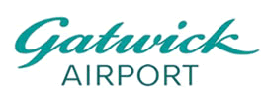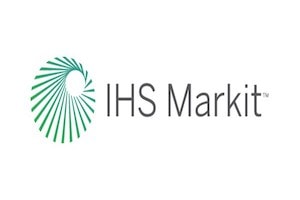You Ask, We Answer: The Cost of MySQL – How Much Does the Database Really Cost? (Licensing, TCO, and Support)
Here at Sirius, we often get asked, "How much does MySQL cost?" This is a critical question, and one that deserves a clear, honest answer. We understand the need to know the true financial implications of any technology choice, as database infrastructure decisions are ones a business will have to live with for years.
We want to be fiercely transparent right from the start: MySQL is a powerful and flexible open-source database, and while its Community Edition is "free" in terms of licensing, the truth is, the free license can actually mask significant and often catastrophic hidden costs for mission-critical operations.
This article will break down the three primary factors that drive the true financial cost (or Total Cost of Ownership, TCO) of MySQL up or down: the choice of edition, Oracle's proprietary licensing structure, and the necessity of high-quality commercial support. We aim to educate you thoroughly, enabling you to make the most informed decision possible for your specific needs.
Understanding the True Total Cost of Ownership (TCO)
The foundational economics of MySQL show that evaluating its adoption involves balancing initial licensing costs (CAPEX) against ongoing operational expenditure (OPEX). To accurately determine the true cost, organizations must shift their focus away from initial fees toward long-term operational costs.
The single largest factor in the Total Cost of Ownership (TCO) for database infrastructure over its lifetime is OPEX, driven primarily by professional labor and high-availability (HA) requirements. Salaries for specialized staff, such as Database Administrators (DBAs) and System Operators (SysOps), account for more than 50% of the total expenses over a server's lifespan.
Strategic financial decision-making, therefore, must focus on maximizing the efficiency of this labor and minimizing service interruptions.
Pricing Based on MySQL Editions
MySQL is structured around a bifurcated product model that determines an organization’s TCO trajectory: the free Community Edition and the proprietary Enterprise Edition.
MySQL Community Edition (The "Free" Option)
The Community Edition is available for free download under the GPL license and is the world's most popular open-source database.
- Cost Model: $0 software license.
- Best Fit: Development, testing, learning purposes, small-to-medium applications, and non-critical production workloads with limited budgets.
- Limitations: It lacks official technical assistance from the development team and crucial advanced features needed for enterprise environments, such as comprehensive backup tools, integrated performance monitoring, and necessary security advancements.
MySQL Enterprise Edition (The Proprietary Subscription)
The Enterprise Edition is specifically designed for business-critical applications demanding the highest levels of security, reliability, scalability, and uptime. Choosing this option is a strategic decision positioned to reduce the financial risk, complexity, and inherent operational cost associated with managing sensitive applications.
Key Enterprise Features (Which Reduce Hidden Labor Costs):
- High Availability (HA): Includes the integrated MySQL InnoDB Cluster solution, which utilizes Group Replication and other tools to provide native HA, removing reliance on external scripts or third-party components.
- Backup and Recovery: Features MySQL Enterprise Backup for online "Hot" backups, supporting incremental and partial backups, Point-in-Time Recovery, and compression.
- Security: Offers MySQL Enterprise Transparent Data Encryption (TDE) for data-at-rest encryption and advanced authentication modules for easy integration with existing security infrastructures.
The Hidden Costs and TCO Myth of Self-Support
The fundamental reason organizations should discuss costs and pricing is to understand the trade-offs involved. The perceived benefit of the Community Edition's free license is often exchanged for volatile and potentially catastrophic labor and downtime expenses.
- The Cost of Internal Replication: By opting for the Community Edition and avoiding the Oracle license fee, organizations must internally replicate the sophisticated features bundled in the Enterprise Edition. This requires hiring or training expensive internal specialized staff (DBAs) to manage complex tasks like setting up HA clusters, designing reliable backup procedures, and maintaining security patches for these bespoke systems.
- Volatile Operational Expenses (OPEX): For organizations using the Community Edition, the TCO impact is characterized by volatile OPEX and high operational risk because support relies only on community forums or highly expensive internal DBA salaries. This cost, primarily labor, rapidly eclipses the fixed subscription cost of the Enterprise edition over time.
- Supplementary Costs: Using MySQL often introduces separate external subscription costs for modern analytics, such as third-party data integration tools (e.g., Blendo or Airbyte Cloud), which are added financial layers to the base TCO calculation.
Oracle's Proprietary Pricing Structure (Fixed Support Costs)
Oracle structures its commercial MySQL pricing using a fixed, socket-based subscription model, offering predictable budgetary planning. The price is based on the physical server socket configuration and includes both an initial License Price (CAPEX) and a recurring Annual Support Cost (OPEX).
The Annual Support component is mandatory for customers to access software updates, technical support, and critical bug fixes.
| Edition/Tier | Licensing Model | 1-4 Socket Server License | 1-4 Socket Annual Support | 5+ Socket Server License | 5+ Socket Annual Support |
|---|---|---|---|---|---|
| Enterprise Edition | Subscription (Server/Socket) | $32,100 | $7,062 | $64,200 | $14,124 |
| Cluster Carrier Grade | Subscription (Server/Socket) | N/A | $7,062 | N/A | $14,124 |
For organizations choosing the Oracle path, the value proposition lies in the inherent technical superiority and integration simplicity of its proprietary features (like TDE and InnoDB Cluster), which simplifies compliance and reduces vendor risk by offering a comprehensive, integrated solution.
The Cost and Value of Commercial Support
Because OPEX is the dominant cost driver, investing in high-quality support services that reduce Mean Time to Recovery (MTTR) and optimize infrastructure is crucial.
The commercial support landscape offers two main pathways:
Primary Vendor Support (Oracle)
Oracle's strategy focuses on access to their proprietary stack and integrated features. However, a key finding for organizations is that Oracle does not offer contractually binding rapid response SLAs. The response times stated in their policies are guidelines provided solely for informational purposes and Oracle’s failure to meet them does not constitute a breach.
Organizations purchasing Oracle are buying integrated proprietary features, but they are not purchasing contractually guaranteed rapid performance for the support service itself, introducing a non-negligible operational risk for high-stakes, P1 incidents.
Independent Open Source Specialists (e.g., Sirius, Percona)
Independent specialists challenge the vendor model by focusing on superior Service Level Agreements (SLAs) and vendor-agnostic expertise. Independent providers are a strategically strong choice for organizations prioritizing flexibility and cost reduction.
- Guaranteed SLAs: Leading independent firms offer guaranteed, rapid response times for critical (P1) incidents. For instance, Percona offers guaranteed response times of 15–30 minutes for P1 incidents.
- Independent Support Costs and ROI: Independent support packages represent a significant investment.
- Value Justification: This high expense is often strategically justified because independent experts focus on architecture and optimization, claiming savings of up to 80–90% on hosting bills. For organizations with multi-million dollar annual hosting bills, this investment becomes a strategic net financial gain.
Conclusion: Matching Your Needs to the Cost Structure
The analysis confirms that the Total Cost of Ownership for MySQL is dominated by the labor required for DBA support and maintenance. The decision matrix for MySQL investment should focus on risk tolerance and operational goals.
| If Your Goal Is... | The Right Cost Strategy Is... | TCO Rationale |
|---|---|---|
| Lowest CAPEX / Development Use | MySQL Community Edition | Acceptable risk; TCO relies heavily on internal labor/community support. |
| Integrated Features / Compliance (Single Vendor) | Oracle MySQL Enterprise Edition | Fixed, predictable annual OPEX ($7,062–$14,124); reduced complexity. Risk: Non-binding support response times. |
| Max Uptime / High-Scale Production / Cost Optimization | Independent Specialist Support (e.g., Sirius, Percona) | Annual support cost offset by contractually guaranteed rapid P1 SLAs and potential massive hosting cost savings through optimization. |
In essence, choosing the right MySQL cost structure is like choosing the best insurance policy for your business infrastructure. If your operation is low-stakes (Community), you assume the risk yourself. If your operation is high-stakes, you choose between the proprietary security of Oracle (fixed cost, but riskier support targets) or the guaranteed, risk-mitigating support of an Independent Specialist (higher cost, but superior SLAs and huge optimization potential).
















































